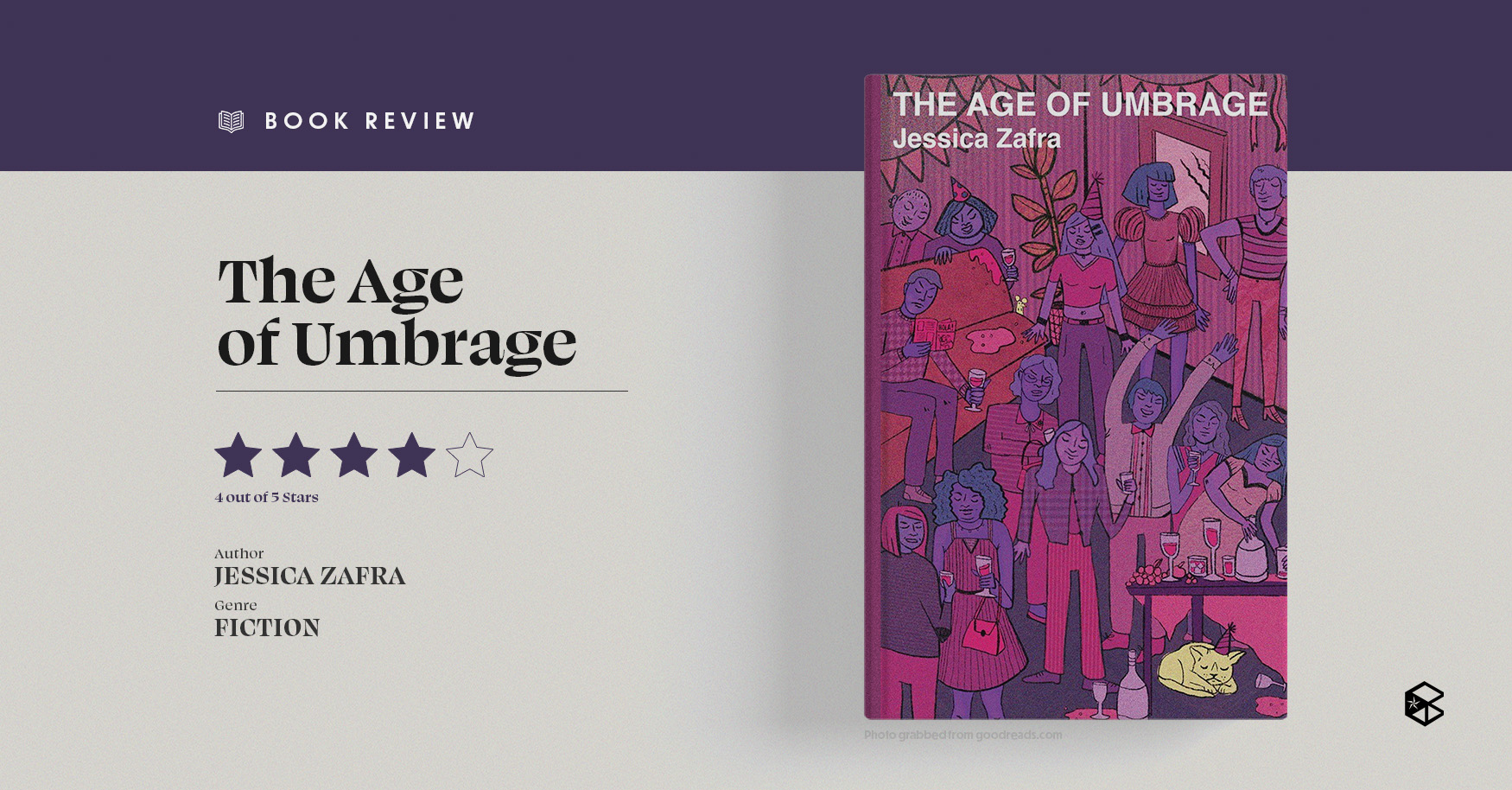Title: The Age of Umbrage
Author: Jessica Zafra
Genre: Fiction
Rating: 4/5
Set mainly in the politically tumultuous aftermath of Martial Law, The Age of Umbrage follows Guadalupe De Leon, a gifted child born to a philandering (now absent) father and a mother whose love strangled her as much as it soothed.
From the disastrous ‘love’ story of her parents, to life under the roof of the affluent Almagro family, to her struggles of fitting in with her high school peers, the coming-of-age tale of Guadalupe is a masterclass in satirical writing, a letter of love (and critique) to Filipino culture, a nod to the strangeness of youth, the inevitability of change, and the permanence of growing up.
Witty, sharp, and colorful
In The Age of Umbrage, Jessica Zafra’s signature witty writing style deserves the limelight. Gag-filled and clever, the book dives straight into the seemingly depressing life of Guadalupe, in a tone so ironic and occasionally absurd that it completely contradicts the reality of her situation, turning what is initially expected to be a saddening story into the telling of the usually odd experiences and encounters of a dry, but brilliant child. Despite this, the book does leave room for poignancy, offering respite from the constant barrage of fun and frivolity. Jessica Zafra’s unique and colorful style of description complements the story’s humor well. Through long lines of imagery and meticulous wording, The Age of Umbrage transports the reader into a living world. Although the narrative was entirely imagined, Zafra’s talent for splicing fact and fiction makes for moments where the reader questions whether certain parts and characters are real, making the book feel all the more familiar and life-like.
Guadalupe, or Guada, is the central character in The Age of Umbrage. She is a gifted, stoic girl who prefers spending her time in solitude, reading fiction novels in the usually empty Almagro library, and watching films and TV shows. But the whims of fate are rarely on her side, and the world keeps spinning regardless of good or bad days. And although Guadalupe‘s emotionless demeanor appears to deter frustration, protecting her against the pain of growing up, these bottled sentiments eventually manifest themselves, like diary entries cursing those who bully her, or eating alone in the Almagro kitchen, tears swelling.
Guadalupe’s development in the book is subtle and gradual, leading up to moments that elevate her from a smart but unexpressive child into someone making sense out of a world she does not quite understand yet. Guadalupe De Leon is an embodiment of many things the youth typically encounter and experience, making her not just a character, but a lens through which Zafra explores the tragedies and joys of adolescence and growing up.
There is a strangeness to childhood, where we are born with an inherent sense of curiosity for anything and everything. Only when we are eventually swept away and eroded by the restless currents of time and settle into the real world do we lose the charm and joy that comes with youth. This phenomenon is the thematic backbone of The Age of Umbrage, seen most evidently in the subtle changes to Guadalupe’s character throughout the book, wherein, despite remaining consistent in many aspects, certain moments reveal vulnerabilities and nuance to Guadalupe’s character, showing the toll that change imposes on her.
A story crafted to resonate with Filipinos
The Age of Umbrage is unmistakably Filipino. From the setting of taking place between martial law and its aftermath, to the characters representing typically Filipino personalities, to culture interweaving with the narrative, to its style of humor, and to the experiences of living as a Filipino.
Zafra uses these elements not merely to decorate the narrative or to cater to a Filipino audience, but to examine and question these elements that are so prevalent in Philippine society. Issues like misogyny, the patriarchal system, extreme religiosity, gossip, corruption, and tough love are not explored, but are entwined with the story; we see how these change the characters and their behaviors. Despite The Age of Umbrage being largely satirical, its appreciation and critique of Filipino culture lie not in the examination of these issues but in their consequences to people.
The Age of Umbrage is an exceptional book, capturing the unique experience of youth as a Filipino and all its joys and tragedies. And although change may bring the end of some things, it also makes room for new beginnings—just as it did for Guadalupe.
The Age of Umbrage is available for purchase in the Ateneo De Manila University Press, Lazada, and Shopee.


